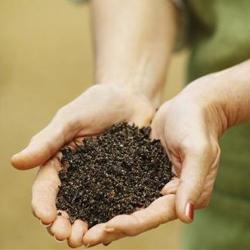Source Institutions
Source Institutions
Add to list Go to activity
Activity link broken? See if it's at the internet archive

The purpose of this lab is to recognize that the answers to some of society's industrial challenges may lie right in our own backyards. Learners discover how to select protein-digesting bacteria from various soil samples. After isolating the colonies, learners are then encouraged to investigate ways to test the effectiveness of their specimens in breaking down protein stains on clothing. This activity demonstrates how bacteria with specific enzymatic capabilities can be isolated with a simple microbiology technique. Adult supervision recommended.
- 1 to 2 hours
- 1 to 7 days
- $10 - $20 per group of students
- Ages 14 - 18
- Activity, Experiment/Lab Activity, Lesson/Lesson Plan
- English
Quick Guide
Materials List (per group of students)
- autoclave (if not available, see alternative lab preparation)
- 30g nutrient agar
- 1 L flask
- 1 L distilled water
- 1 box "Parmalat" brand skim milk ("Parmalat" is basically sterile, can be found on grocery store shelves)
- nonabsorbent cotton
- magnetic stirrer
- sterilized Petri dishes
- stirring plate
- balances
- Bunsen burners
- 95% ethanol
- spreading rods
- 3 sterile 1mL pipettes
- 3 sterile test tubes with nonabsorbent cotton plugs
- 3 sterile jars
- sterile water
- tape
- three samples of soil collected from different environments (a meadow, a wooded lot, etc.)
Subjects
-
Engineering and Technology
-
Engineering
- Bioengineering/Biomedical Engineering
-
Engineering
-
Life Sciences
-
Diversity of Life
- Viruses and Bacteria
- Ecology
-
Diversity of Life
-
The Nature of Science
-
The Scientific Process
- Conducting Investigations
- Gathering Data
- Formulating Explanations
- Communicating Results
-
The Scientific Process
Informal Categories
- Nature and Environment
Audience
To use this activity, learners need to:
- see
- see color
- read
- touch
Learning styles supported:
- Involves teamwork and communication skills
- Involves hands-on or lab activities
Other
Includes assesments for student learning:
This resource is part of:
Access Rights:
- Free access
By:
- Brako, Elisa
Rights:
- All rights reserved, Access Excellence @ the National Health Museum, 2009
